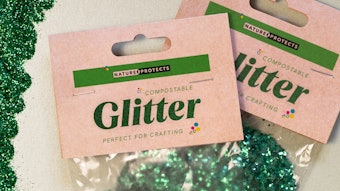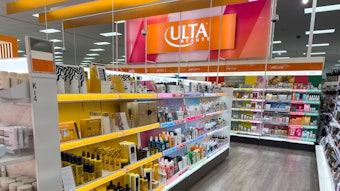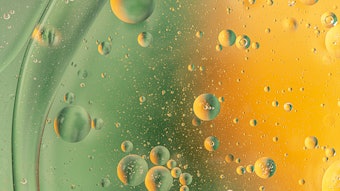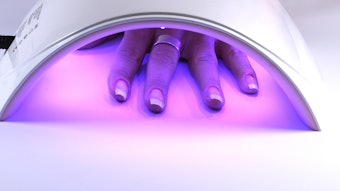Editor's note: This article originally ran on CosmeticsandToiletries.com.
in-cosmetics 2014, held April 1–3, 2014 in Hamburg, Germany, recorded 7,260 unique attendees during this year's event. While the venue dispersed visitors between four adjoining halls, according to the organizers, Hamburg gave the best numbers ever recorded; second only to Paris, the event’s top-performing city. The previous record was set in 2012, in Barcelona. This year, German visitors alone totaled 2,158, i.e., 30% of attendees, which is in line with Germany’s position as the largest cosmetics market in Europe.
Alphabet Trend
While the separate exhibit halls gave attendees space to move about, the market trends theater did not—at least not for the number of folks packing in to hear the “ABC Product Craze” talk, by Jamie Mills, of Informa. During the talk, she examined whether ABC products are a passing fad or continuing trend by deconstructing the consumer sub-trends behind this current phenomenon.
Mills explained that consumers want products that are “efficient and effective, portable and simple to use, and multifunctional.” She provided examples from the fast-moving consumer goods space, such as Orbitz White chewing gum, mineral drinks, household cleaners, even a dental floss having six functions, all of which she cited as continuing the "alphabet" trend. She added, “This category is evolving further with the development of new categories resulting from the crossing of categories.” Mills concluded, “It’s all about giving consumers value for their money, and continual innovation will make this a longstanding trend.”
Brazil Focus
During the in-cosmetics press briefing the first day of the show, organizers set the stage for the event’s expansion to Brazil, to be held on September 9 and 10, 2014, in São Paulo. Irina Barbalova and Oru Mohiuddin, of Euromonitor International, were among the presenters who acknowledged that while there’s been talk about a slowdown in the Brazilian market, a look at the competitive landscape shows it is still a major market for opportunity. Although mass product sales decreased in Latin America, prestige product sales grew; and consumers in lower classes felt the need to save money while those in the middle class “traded up.” Overall, the Brazil cosmetics industry still outperforms other regions worldwide, ranking first in deodorant and fragrance, and second in hair. In fact, 30% of hair conditioner sales in 2013 were in the Brazilian market—and this category is expected to grow by 30% between 2013 and 2018.
Tied into the Latin theme, in-cosmetics also featured a Brazil Trail among the exhibits. Sponsored by Beraca, and including the stands of Clariant, Chemyunion and Kobo, new products or formulations inspired by Brazil were displayed. Visitors could also connect with Brazilian suppliers in the Brazil Exhibitor Pavilion, supported ABIHPEC. Other floor highlights, included: the French Pavilion, Innovation Zone, and new Fragrance and Testing/Regulatory Zones, among others.
Furthermore, expanded education and regulatory sessions gave attendees a variety of options to add to their itineraries. Nine workshops provided in-depth scientific analysis, perhaps one of the most noteworthy being a new pre-show workshop held in cooperation with the IFSCC. This session provided invaluable insight into recent perspectives in nanotechnology.
Exploring Nanotechnology
Claudie Willemin, vice president of IFSCC and president of the French society (SFC), who moderated the nanotechnology session, said in a press statement, “[Nanomaterials] often exhibit unique properties that are different from those of the same substances in a larger size, such as new functionality, and new optical and physical properties. Nanomaterials can be considered a driver for innovation and economic development."
Often applied in sun protection, nanoparticles provide broad spectrum protection with a transparent look that appeals to consumers. However, concerns have been raised over their safety to human health and the environment. European legislation now requires companies employing nanoparticle technology to list "(nano)" on the label.
"The cosmetics industry has always considered the safety of consumers, professionals and the environment as being of utmost importance," stated Willemin, "and European cosmetics regulation 1223/2009 was the first to introduce nano-specific requirements. It defines a nanomaterial as an insoluble or biopersistant, intentionally manufactured material with one or more external dimensions or an internal structure in the 1 to 100 nm range.” She added that while these materials have been used for years in the personal care industry, processes must be established to fulfill administrative regulation requirements.
This was the first year that in-cosmetics partnered with the IFSCC for a pre-event conference. Regarding this arrangement, Willemin stated, "The purpose of the IFSCC is to encourage fundamental research work for cosmetic science, and to communicate on the latest scientific advances in the cosmetic field. To be involved with in-cosmetics Hamburg allows us to emphasize this." She added that to this same end, the IFSCC presents scientific congresses and conferences annually, and that after 16 years, the IFSCC Congress will return to France. This year, La Société Française de Cosmétologie (SFC) will host the 28th Congress in Paris, at Palais des Congrès. It will be themed "Cosmetic Innovation & Performance for Beauty & Well-being."
Awards Galore
While it is nearly impossible in this space to name every new launch at in-cosmetics, those featured at the awards ceremony give a good pulse of the latest and greatest concepts out there. Awards were presented by Beiersdorf, in-cosmetics, Cosmetics & Toiletries and Organic Monitor for a variety of parameters, described here.
Innovation Pitch: First, new to the awards lineup, Beiersdorf extended its Pearlfinder open innovation initiative to an "Innovation Pitch" project during in-cosmetics, to provide developers of novel solutions the chance to pitch and potentially commercialize their inventions. The original 66 entries were narrowed to three winners. Ashland took third place, for a sun care-related technology, while Croda took second, for a multifunctional body and sun care concept.
Korea Particle Technologies (KPT) was awarded first place for its Emulsion Pearls technology, which also was a finalist in the Cosmetics & Toiletries R&D Awards. Jae-Uk Lee, president of KPT, described the inspiration behind the technology. “This idea came from ice cream, which is also an o/w emulsion, and the cryogenic processes used to create the frozen ice cream ‘dots.’” The resulting technology enables o/w emulsions to be transformed into soft beads or spheres that may be colored, produced in different sizes and loaded with most additives, including actives, scrubs and pigments.
“This technology could also be used by the pharmaceutical industry to deliver a certain amount of active in a controlled manner,” said Lee. “Most o/w emulsions can be transformed into pearls, and I believe Emulsion Pearls will open a new era in cosmetic formulation.”
Innovation Zone: The in-cosmetics Innovation Zone judging panel, organized by Cosmetics & Toiletries, awarded Gattefossé the gold for its Emulium Mellifera line of products—PEG-free emulsifiers that auto-adapt to skin type and climate, and create emulsions that are white and luxurious in appearance. As Laurent Schubnel of Gattefossé explained, "The various textures developed for different applications give a very good feel, but what was most surprising was how well the technology works even in sunscreen formulations, leaving a light and nonsticky feel.”
in-cosmetics silver and bronze awards were presented respectively to: Induchem for Redensyl, a new hair growth galvanizer that targets the hair follicles’ stem cells; and Lipotec for its Argirelox peptide, which reduces expression lines by modulating muscle contraction.
R&D Awards: Next up was Cosmetics & Toiletries with its R&D Awards, which have run for more than ten years now. The finalists included KPT for its Emulsion Pearls, as noted; Sederma for its Venuceane active, which counteracts infrared-induced ROS production; and Clariant International, for its Nipaguard Zero preservative. This year's winner was Silab, for its Volunage facial remodeling active. Derived from Paeonia albiflora (peony) root, a medicinal plant used in traditional Chinese medicine, the ingredient contains sucrose and glucose oligosaccharides, and acts via communication between the reticular dermis and hypodermis.
Silab's David Boudier explained, “We studied the impact of UV exposure on the cascade of inflammatory markers and mediators, and observed a secretome from the distressed fibroblasts.” The inflammatory profile of the secretome was then mapped using protein arrays, eventually leading to the treatment of preadipocytes with the secretome, which significantly reduced the synthesis of cytokines from pro-inflammatory receptors, and normalized the fibroblasts' secretome profile. “These effects were then tested in vivo in panelists having photo-exposed skin, where the Volunage group, versus a placebo group, showed improved restoration of harmonious volume to the face.”
Rachel Grabenhofer, editor of Cosmetics & Toiletries, noted “I think it's quite timely that the judges chose Volunage as this year's winner. There's currently a great deal of interest in the industry in epigentics, transcription factors and other biological communications.” [Editor's note: Advanced research topics such as these, along with practical hands-on formulating, will also be the focus of the Cosmetics & Toiletries R&D Summit.]
Green Ingredient: Finally, also new to the in-cosmetics awards, Organic Monitor presented gold, silver and bronze to three green ingredients. Alban Muller International took home the gold for its Scurvy Grass Extract, a 100% natural extract rich in vitamin C for anti-aging benefits. The silver and bronze winners, respectively, were Minasolve with MinaCare Pentiol Green+, a unique version of pentylene glycol produced from renewable vegetal raw materials; and Akott, with Akosky Apium, a hydrosoluble celery cell culture extract, which has been shown in vitro to stimulate pro-collagens I and III, and fibronectin.
From all this pomp and circumstance, one thing is clear: creative innovation is alive and well within cosmetics R&D. Necessity, they say, is the mother of invention, and consumers have made it necessary for product developers to enhance, optimize and stretch biology and chemistry in new ways; stay tuned for what’s yet to come at the next European in-cosmetics, to be held April 21-23, 2015, in Barcelona.










